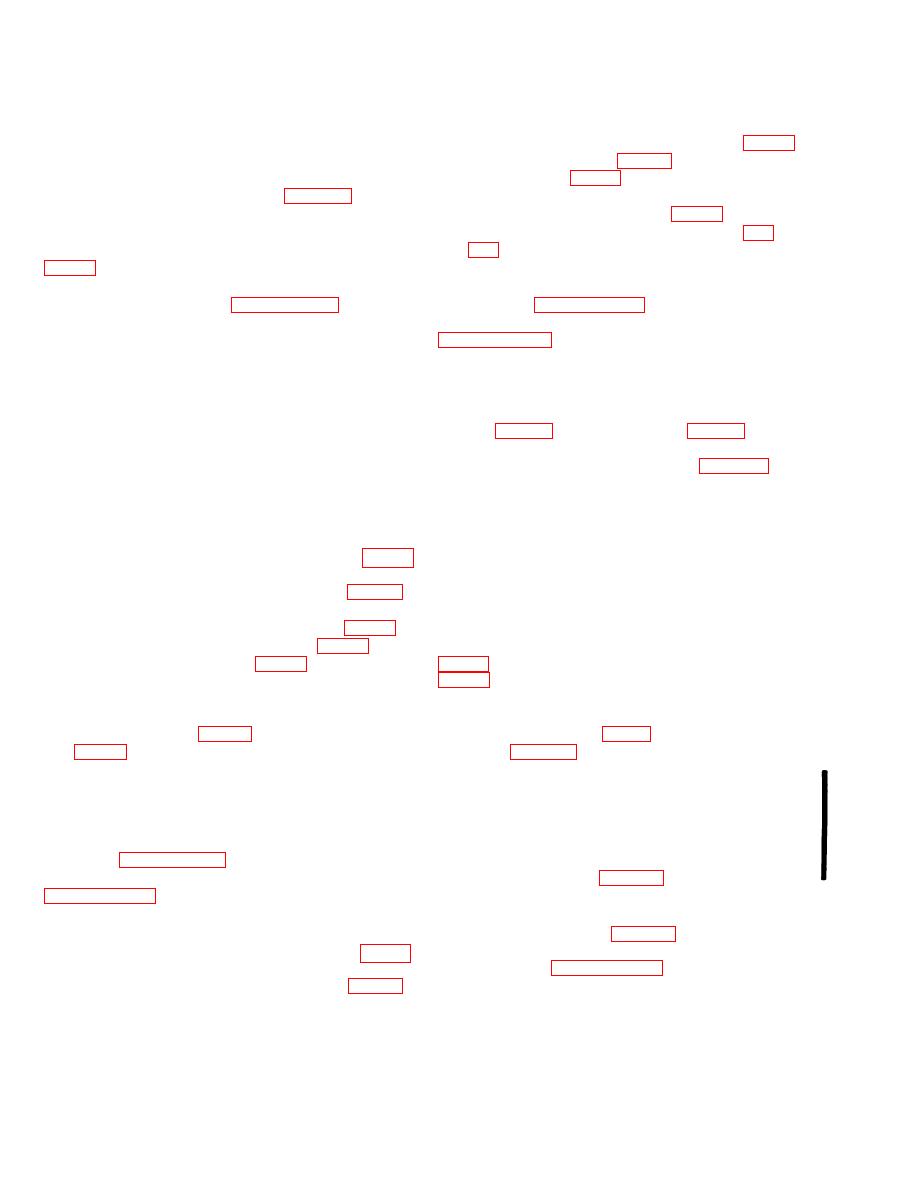 |
|||
|
|
|||
|
|
|||
| ||||||||||
|
|
 TM 3-6665-225-12
NOTE
c. Pull rainshield (13) from adapter (14). Screw
If M43 detector unit horn does not sound,
rainshield (13) into handle (2).
disconnect power source from 24 VDC
INPUT connector, and repeat (22) through
assembly cover (3, fig. 2-8).
(26) above twice, if necessary. Use a new
filter each time. Then refer to table 3-3 for
NOTE
When using FLOWMETER (2, fig. 2-6), in-
operator's troubleshooting information.
(27) Disconnect power source connector from
stall FLOWMETER over adapter (2, fig.
M43 detector unit 24 VDC INPUT connector (11,
it clockwise and pull from adapter.
f. If air temperature is 40F. or above, perform
(28) Immediately continue operation by per-
forming the procedures of paragraph 2-9r through
procedures of paragraphs 2-7 through 2-9.
x.
g. If air temperature is below 40F. proceed to
NOTE
The alarm system is now operational.
2-18. Operation in Blowing Sand or Dust
2-16. Operation in Rain or Sleet
CAUTION
Do not remove bottom case assembly
NOTE
After separating M43 detector unit bottom
presence of blowing sand or dust. Per-
case assembly and detector assembly, posi-
tion bottom case assembly with its bottom
form preoperational procedures (para 2-6)
in a sheltered area such as inside a build-
up to keep inside as dry as possible. Also
shield components mounted under detector
ing, inside of a vehicle, or under a lean-to.
assembly with the body as much as possi-
Contamination of the components within
the M43 detector unit with sand or dust
ble.
will render it useless.
graph 2-6.
a. When bottom case assembly is removed, in-
spect for presence of sand or dust. Carefully remove
from handle (2).
any foreign material being careful not to damage
components.
b. Before reassembling bottom case assembly (9,
AIR INLET assembly cover (3, fig. 2-8).
NOTE
When using FLOWMETER, pull rainshield
insure watertight and airtight seal when they are
assembled.
(5) away from adapter (2) and install
FLOWMETER (2, fig. 2-6) over adapter (2,
scribed in table 2-1 using the following procedure.
(1) Disconnect power source from 24 VDC IN-
(2). To remove FLOWMETER turn it
PUT connector.
clockwise and pull from adapter. Remove
(2) Replace air filter with a new one. Make sure
rainshield from handle and install over
the Air Filter plug is tightly installed.
adapter.
e. If air temperature is above 40F., perform pro-
(3) Reconnect power source to 24 VDC INPUT
cedures of paragraphs 2-7 through 2-9.
connector.
f. If air temperature is 40F. or below, proceed to
(4) Check airflow (para 2-9h).
d. If air temperature is 40F. or above, operation
is the same as under usual conditions, starting with
2-17. Operation in Snow
preoperation procedures (para 2-6).
e. If air temperature is below 40F., operation is
graph 2-6.
as prescribed in paragraph 2-15.
from handle (2).
2-14
Change 2
|
|
Privacy Statement - Press Release - Copyright Information. - Contact Us |